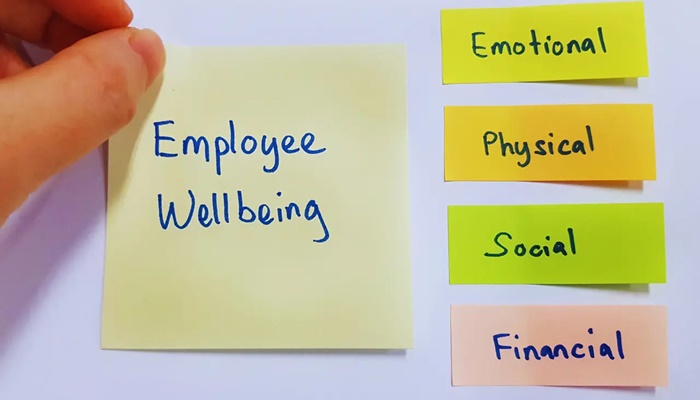What does it mean for a company to remember? Not just to store data or precious artefacts, but to understand what shaped it. To carry forward purpose, beliefs, stories and struggles that still echo in decisions made today.
Gallup’s global research shows that only 30 percent of employees strongly agree that their organization’s mission makes their job feel important. When employees can’t connect their work to something lasting, the purpose feels abstract. More slogan than story.
Purpose becomes powerful when it becomes shared memory. When people know they’ve left fingerprints on the company’s story. When the arc of the organization includes their voice or their decision. That connection doesn’t come from messaging. It comes from remembering together.
I recently spoke with corporate archivists and historians at two iconic companies—IBM and Marriott—about how their organizations preserve memory. These weren’t discussions about storage. They were conversations about continuity. About how memory lives when employees see themselves in it.
Purpose As Shared Memory, Not Stored History
Most people still picture archives as locked rooms, brittle documents or carefully preserved artefacts behind glass. But corporate memory is not a museum. It is a strategic, cultural resource that belongs in everyday work.
“Archives aren’t about looking backward,” said Jamie Martin, Corporate Archivist at IBM. “We help people use the past to understand what’s happening now. Sometimes that means a marketing team wants to revisit a campaign from decades ago. Sometimes it’s a product team looking into how a new category was developed. Sometimes it’s a legal team trying to trace a long-standing relationship or innovation history. We’re here to keep the memory functional.”
That functionality isn’t just operational. It is emotional. It reinforces identity. It preserves culture. It lets employees see that they’re building on something that matters.
In the age of digital overflow, corporate memory isn’t about collecting everything. It’s about discernment. As Jamie explained, deciding what makes it into the archive is a little bit of art and a little bit of science. Not everything should be saved. But the right things must be.
At Marriott, archivist and historian Katie Dishman offered a similar view. “There’s something powerful about reading a founder’s handwriting,” she said, referring to the journals of J.W. Marriott Sr., which span from the 1920s into the early 1980s. “They show what he struggled with, what he paid attention to, and how ideas like service and employee care were developed. That voice still shows up in conversations today.”
Katie explained that selecting what enters the archive isn’t just about historical curiosity. It’s about future utility. “I try to think historically about what people in the future might need to know or find useful for various projects.” That mindset makes memory a forward-looking asset, not just a backward glance.
In both organizations, the archive is not separate from employee experience. It supports onboarding, shapes leadership messaging and gives cultural rituals a lineage.
Purpose Lives In Memory
Some of the most influential knowledge inside organizations is never recorded. It’s passed along in team meetings, embedded in rituals or remembered in hallway stories. These are the quiet artifacts. Moments, phrases, instincts. They may be undocumented, but they are often more defining than official content.
“Storytelling is a big part of what we do,” said Jamie. “Some of the most valuable context comes from conversations. You see people light up when they realize a challenge they’re facing today was already being worked on in the 1950s. It gives them a sense of belonging in something bigger.”
Jamie also told me how at IBM they use oral histories to help fill in the gaps in the historic record and to bring in personal perspective.
Katie echoed the same pattern. “As archivist, I’m often asked to provide examples from history to help reinforce a leadership message or support onboarding. It’s not just about the facts. It’s about how those values were shaped over time. That’s what people respond to.”
One of her favorite resources is the collection of old company newsletters. “They’re a good source of showing how a company was run and how it has changed,” she said. “They’re also full of photos that capture culture in a way words sometimes don’t.” It’s a reminder that what feels small in the moment often becomes what’s remembered.
Organizational culture is sustained through repetition and story. Preserving memory is not about freezing the past. It’s about retelling it in ways that help people see where they fit and where the company is headed next.
The Risk Of Outsourcing Meaning
As artificial intelligence becomes more common in corporate workflows, there’s a growing temptation to treat memory as another system to automate. AI can summarize meetings, auto-tag documents and simulate timelines. But machine memory can’t carry emotional memory.
The danger isn’t just that AI may misrepresent the past. It may present it too cleanly. Real memory has contradictions. Doubt. Hesitation. Texture. It’s not tidy. It’s not supposed to be.
Katie told me she prints digital reports not out of habit, but precaution. “I tend to err on the side of caution,” she said. “You want to make sure the materials still exist years from now, even if the platform doesn’t.”
Jamie is pragmatic about where AI fits. “There are ways AI can help. Organizing, sorting, tagging. But the meaning, the value, the emotional nuance? That still needs a person.”
Sometimes, when purpose feels diluted, the most clarifying move is to return to the source. Jamie described how IBM’s founding documents—some kept in foot-high boxes—still inspire awe. They are more than records. They are reminders of original intent.
If memory becomes too technical, it risks losing the one thing that makes it purposeful. Its ability to hold something human.
Participatory Memory Builds Engagement
Gallup’s research continues to show that purpose becomes powerful when it’s personal. Employees don’t just want a mission to believe in. They want one they helped shape. Real engagement happens when people see how their work is part of the organization’s evolution.
This is participatory memory. It’s when employees are invited to contribute stories, reflect on milestones or share how past decisions shaped current outcomes, they don’t just absorb history. They become part of it.
Organizations that treat archiving as a living function, not a technical task, are preserving more than content. They are preserving meaning. They are creating space for people to say, I helped build this.
That’s how purpose becomes shared memory. And how culture becomes something worth belonging to.
Six Ways To Build Shared Memory
Here are six ways to build memory as a strategic, cultural practice:
- Assign ownership: Memory doesn’t manage itself. Designate a function—archivist, historian or cross-functional team—to oversee corporate memory as a living process. Ideally, this is a dedicated professional who stewards memory with intent.
- Gather stories from people, not just data: Interview employees across levels not just CEOs, leaders and founders. Capture the context behind strategic shifts, not just the headlines.
- Create a visible timeline: Map major milestones, turning points, product launches and cultural inflection points. Make it accessible to all employees.
- Use AI for support, not storytelling: Leverage AI to organize, tag and store content. But let humans interpret and narrate. Meaning cannot be manufactured.
- Preserve informal culture: Document rituals, language, habits and behaviors that reflect lived values. These shape identity more than formal messaging.
- Use memory to deepen onboarding and leadership development: Introduce shared memory early. Reference it during strategy discussions. Let it shape how leaders talk about purpose and legacy.
Purpose That Carries Forward
The most enduring purpose is not one that is declared. It is one that is carried.
Memory, when activated, gives people a place inside the organization’s long story. Not just as observers, but as participants. And when employees feel that, they stay engaged. They care differently. They lead with more clarity.
Purpose lives through shared memory. It shows up in how we connect the past to the work of today. It moves when people carry it forward, not because they were told to, but because they believe they’re part of what comes next.




















